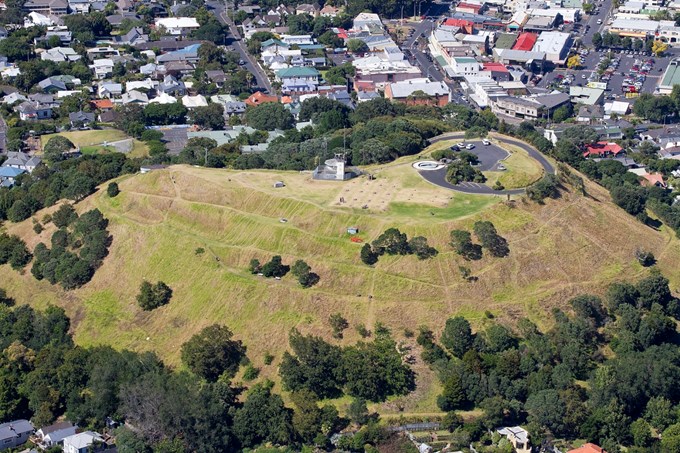Around fifty elm trees on the northern boundary of Takarunga / Mt Victoria in Devonport are infected with Dutch elm disease and must be removed to prevent the disease from spreading further.
Arborists will remove the trees using a helicopter on Tuesday 7 and Wednesday 8 May, weather depending. The tree material will be lifted to the tihi (summit) for ease of processing, and for safety reasons Takarunga / Mt Victoria will be closed to the public over these days.
What is Dutch elm disease?
Dutch elm disease is an extremely virulent fungus that lives in the bark of an infected elm tree and causes it to wilt and die. It is transferred from tree to tree through root grafting or via the elm bark beetle. The fungus only affects elm trees and an infected tree cannot be cured.
In New Zealand, Dutch elm disease is contained to Auckland, so every precaution is taken to ensure it does not spread further afield.
Under the New Zealand Biosecurity Act 1993 the fungus is deemed an ‘unwanted organism’ and any infected elm tree must be destroyed.
Auckland Council has authority under the Act to remove unwanted organisms and has issued a notice to the Tūpuna Maunga Authority to remove the infected trees on Takarunga / Mt Victoria.
Removal the only option
Auckland Council Senior Arboriculture Specialist Simon Cook explains removal is the only option.
“There is no way to effectively treat Dutch elm disease or to cure an infected tree. The disease can spread quickly and it is nearly always fatal."
“In this instance, the fifty or so elm trees of varying size and age are all connected through an interlinked root system through which the disease will easily spread, so all of them must be removed to ensure the disease is eradicated from this site,” says Cook.
Cook explains that the felled trees will be immediately mulched on-site, which destroys the fungus and any elm bark beetles that may be present, allowing material to be safely transported without the risk of further spread.
Nick Turoa, Tūpuna Maunga Authority Operations Manager, says biosecurity is an important and active part of the work programme across the maunga of Auckland.
Protecting the maunga and surrounding area
“Protecting the integrity of the maunga landscape and ecology is one of the central themes of the Tūpuna Maunga Integrated Management Plan and significant attention is placed on pest and vegetation management with the goal of a healthy and resilient ecosystem,” says Turoa.
“We also recognise that, while we are required under law to remove these diseased trees, it is an important step towards minimising the spread of Dutch elm disease to neighbouring suburbs.”
The Authority will rehabilitate the site of the removed trees with grass cover and in time will replant appropriate native trees.
In March 2018 the Tūpuna Maunga Authority received a similar notice to remove diseased elm trees from Ōhinerau / Mt Hobson.
Check your elm trees
This latest discovery is a timely reminder for all Aucklanders to check elm trees on their properties for signs of the disease. Elms are deciduous trees distinguished by their large leaves, which feature serrated edges, symmetrical veins, and an asymmetrical base. Signs of Dutch elm disease include wilting, curling or yellowing of leaves or dying or dead branches on elm trees.
Cook says people should not attempt to remove diseased trees themselves as incorrect processing of trees could spread the disease. People should instead call Auckland Council on 09 301 0101.
“Do not be tempted to use the timber for firewood. Diseased wood must not be stored, and it is illegal to move diseased wood within or out of the Auckland region,” says Cook.
More information on Dutch elm disease can be found on the Auckland Council website www.aucklandcouncil.govt.nz.
More information about the Tūpuna Maunga Authority and an online copy of the Tūpuna Maunga Integrated Management Plan can be found at www.maunga.nz.


